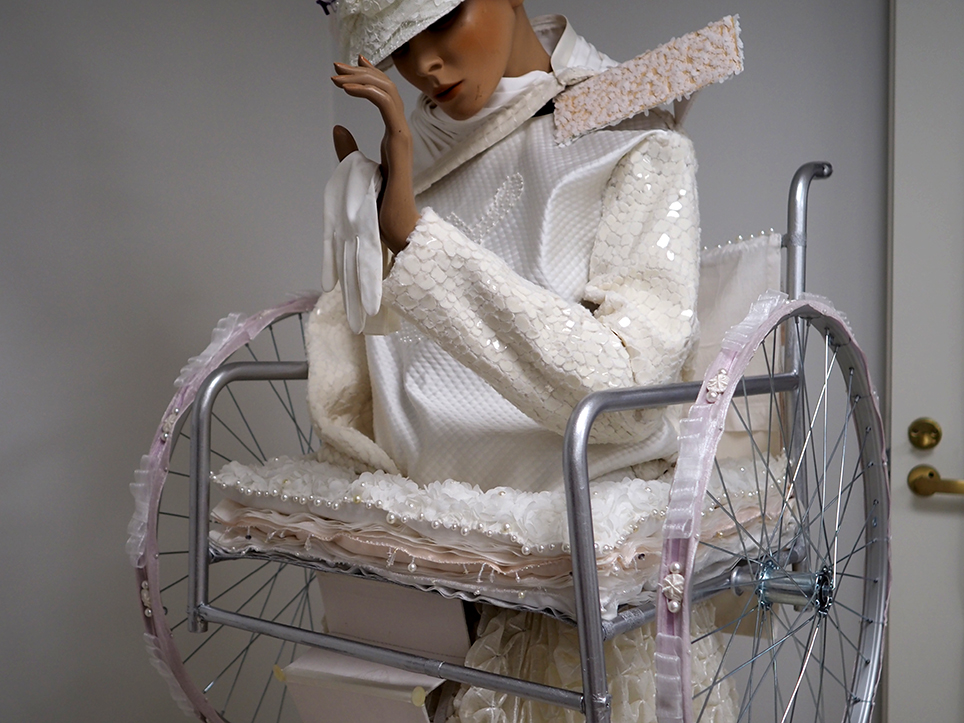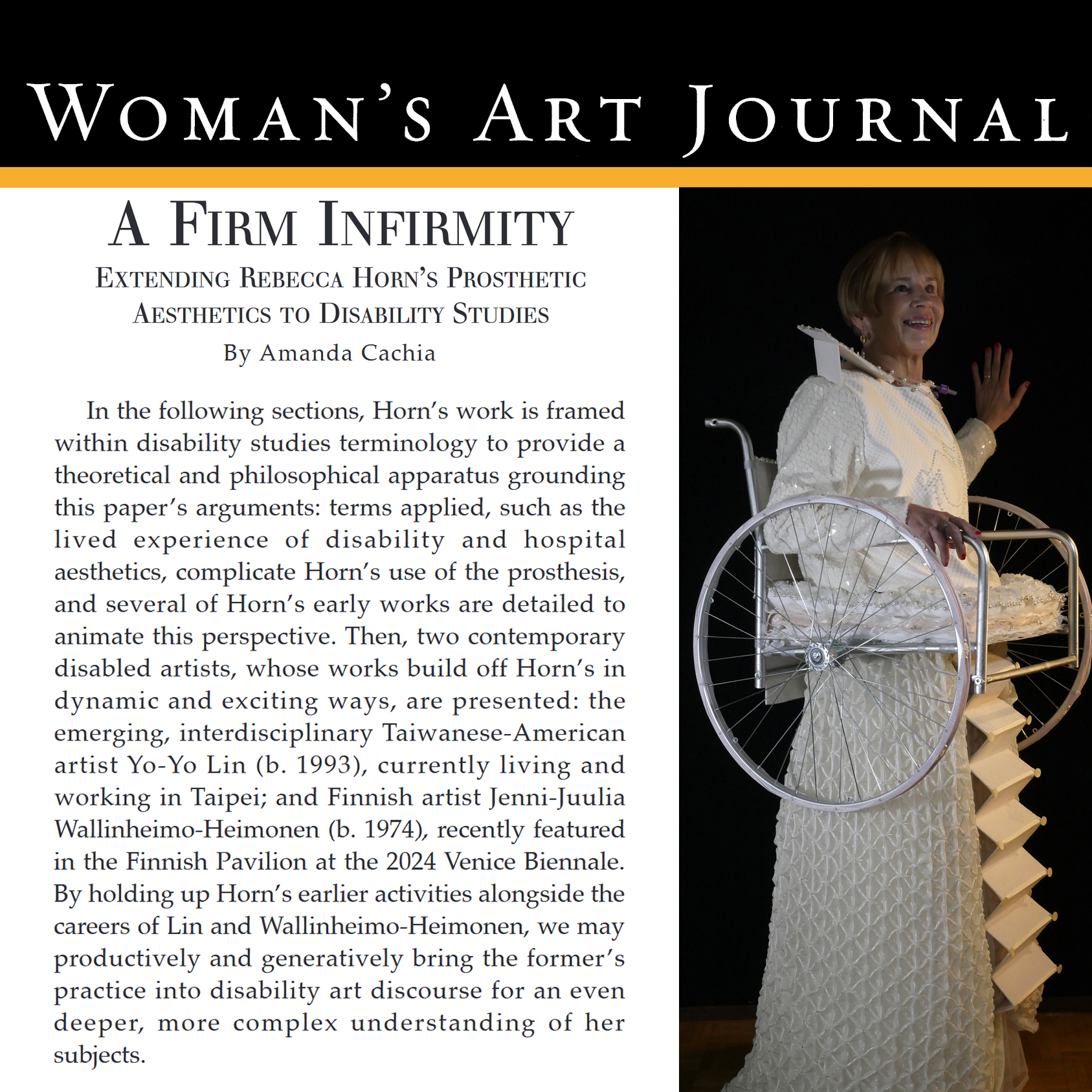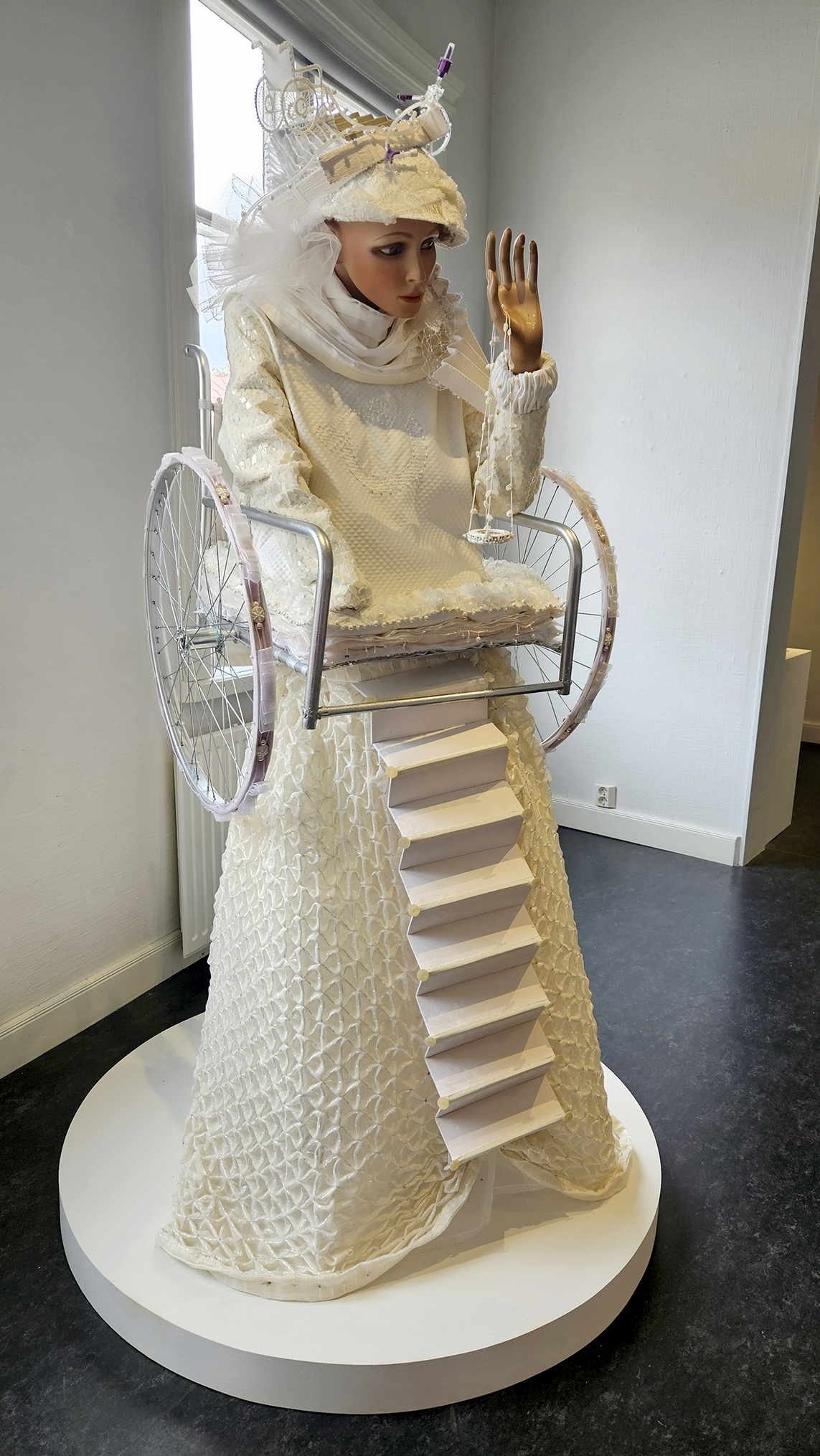
Am I your inspiration, really?
Performance costume 2021
Empathy objects -series
Recycled textiles, garden chair, wheels, hand embroidery.
Video in Instagram. The hat for the costume.
The most common form of discrimination faced by people with disabilities is inaccessible environment.
An online discussion about accessibility argued: ”Wheelchairs no longer prevent people from moving in public spaces”. Aside from the fact that the sentence is not true, its craziest thing is the claim about wheelchairs. They have never stopped people from moving but rather made it possible and easier for many. Instead, the old building stock, bad architects, inadequate construction regulations, carelessness, stairs, thresholds and heavy doors have effectively stopped many others than just – wheelchairs – from moving. Referring to the mobility aids as a source of discrimination is a common way to explain and justify inequality, that people with disabilities face in society. Blaming the victims seems easier than breaking barriers.
My late idol, Australian disability activist Stella Young, also living with osteogenesis imperfecta, told at her famous TED Talk about how people with disabilities are portrayed as inspiring heroes who make the adversities of others look small. To achieve heroic status it seems enough to get up in the mornings and know how to say your name. In the media, the use of models with disabilities is explained by the desire to expand the ideals of beauty. But honestly, I haven’t come across anyone who would have handed a picture of a person with disability to a plastic surgeon because they want to look the same. Far too few are also the architects who shout to the world how people with disabilities inspire their work.
Am I your inspiration, really? – wearable sculpture is a statement against hypocrisy and discrimination framed as kindness. If we – people with disabilities – are really so cool, why not the most common symbol of ours – the wheelchair – then could be part of an evening gown for walking people as well?
Modelling, Counsellor of Social Welfare Sari Loijas with her guide dog Citta. Images: Jenni-Juulia Wallinheimo-Heimonen
Image from the Taidekieppi exhibition: Anna-Stina Lindén.

Amanda Cachia, A Firm infirmity extending Rebecca Horn´s prosthetic aesthetics to disability studies. Woman´s Art Journal, spring / summer 2025, vol. 46.

At Rauma Triennale 2025, Rauma Art Museum.

